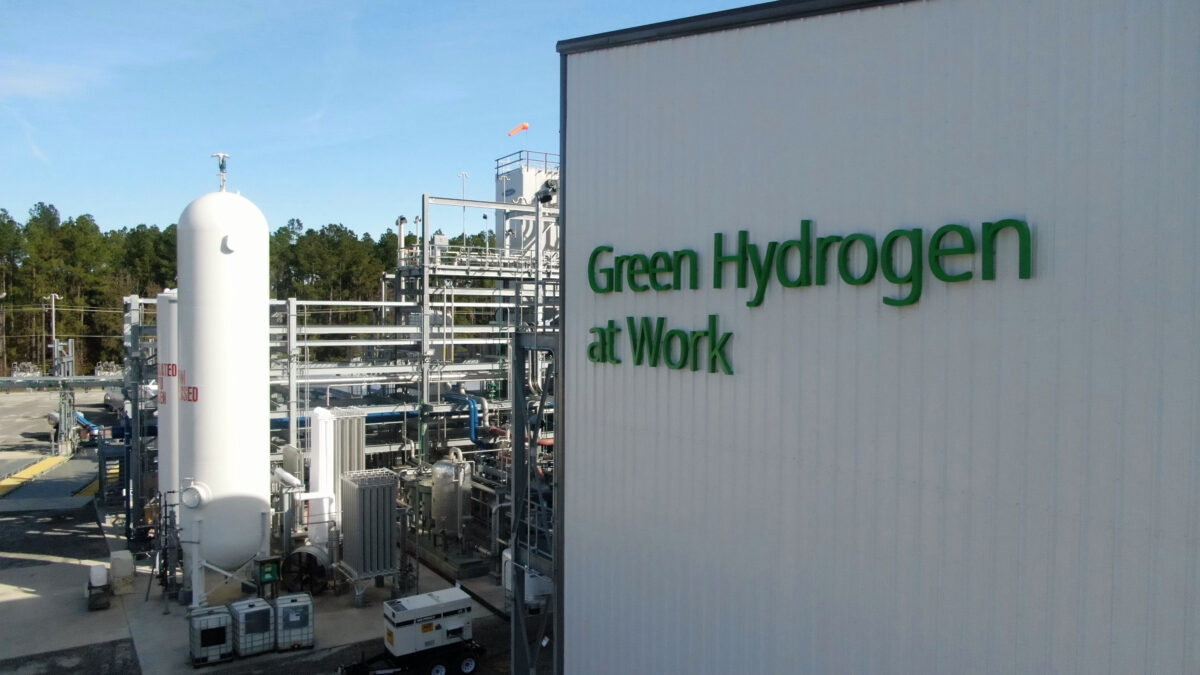Hydrogen company Plug Power launched operations at the largest liquid green hydrogen plant in the U.S., located in Woodbine, Georgia.
The facility has the capacity to produce 15 tons of green hydrogen per day; enough, the company says, to power some 15,000 forklifts daily. It includes eight, 5 MW electrolyzers; the largest such electrolyzer deployment in the U.S., which produce hydrogen. This hydrogen gas is then condensed into a liquid, by dropping its temperature to -423F, at which point it can be routed to hydrogen fueling stations. The facility is located a mile away from highway I-95 and 20 miles away from I-10, giving it easy access to commercial and industrial centers across the country, the company said.
The hydrogen produced by the new facility will add to the liquid hydrogen deliveries that Plug Power currently makes to its customers for fuel cell electric vehicle fleets, stationary power applications, and other such uses. Liquid and gaseous hydrogen are both expected to positively impact the company’s bottom line, Plug Power said.
The move comes as interest in green hydrogen grows as a tool to decarbonize specific industries, including heavy-duty transportation, heavy manufacturing and aviation.
“The hydrogen market in the U.S. is at an inflection point. We expect hydrogen infrastructure and product offerings to vastly expand in the next five years, including increasing commercial uses in hard-to-abate sectors like concrete, steel, glass manufacturing, and more,” Andy Marsh, CEO of Plug Power, told pv magazine USA.
The company is committed to driving that continued market expansion with the buildout of its North American hydrogen production plant network, strong partners, and expanded electrolyzer production, Marsh added.
The role of the hydrogen sector in the clean energy transition has been backed by recent legislation, such as the Inflation Reduction Act – and specifically, the clean hydrogen production tax credit (PTC), which Marsh said has the potential to catalyze the domestic hydrogen sector, and drive down costs, allowing the industry to scale in a meaningful way. At the same time, “there are still a lot of outstanding questions on the implementation of the PTC based on the draft guidance the U.S. Treasury Department released at the end of 2023,” he added.
Now that the Georgia facility is online, the company is looking at building out a green hydrogen network of production plants across the U.S. and has made substantial progress on other U.S.-based plants, including plants in Louisiana, New York, and Texas, Marsh said.
“All these plants in development will benefit from our experience building the plant in Georgia,” he said.
At the same time, Marsh noted, government policy support is essential for the hydrogen industry to scale and achieve cost parity with other energy sources.
“Policymaker guidance on incentives aimed at fostering the clean hydrogen industry must be clear and pragmatic in achieving these aims,” he said.
This content is protected by copyright and may not be reused. If you want to cooperate with us and would like to reuse some of our content, please contact: editors@pv-magazine.com.








Where is the green power coming from?